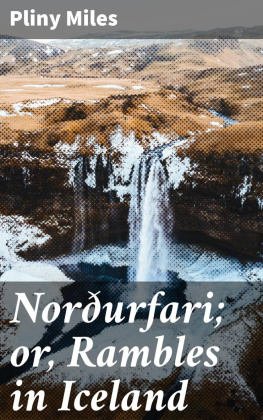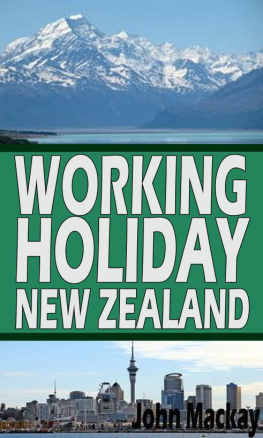PREFACE.
Table of Contents
It is a very common practice among book-makers of the present day, to entertain their readers with a preface, setting forth with coquettish diffidence, not the merits, but the demerits of their productions. If they believed their own professions, and their diffidence were anything but feigned, it is obvious they would never have entered the list of authors, and
"done their best
To make as much waste-paper as the rest."
It is not my intention to follow their example; but in order to secure my readers as much as possible against the chances of disappointment, I at once assure them most frankly, that the following pages have no pretension to literary fame, but were hastily thrown together during my rambles, and have since been deprived (by my arduous occupation as a merchant in Sidney) of whatever improvement a careful revision might have enabled me to effect.
The only claim therefore I have on the attention of my readers, is founded on a desire to add something to the little stock of information respecting New Zealand, which, amidst the general interest emigration has excited in England, obtains no ordinary share of consideration. Divested of the usual traveller's licence, fidelity in narrative and attentive observation may safely be depended on: and I have some confidence, having wandered farther in this colony than any other European who has communicated his information to the public, that no one will rise from the perusal of this pamphlet dissatisfied with the trifling amount of money and time it may have cost him.
J. C. BIDWILL.
Sidney, August 25
th, 1840.
RAMBLES
Table of Contents
IN
NEW ZEALAND.
Table of Contents
I arrived at Sydney in September 1838, and soon received the first of those useful lessons which disappointment teaches. I allude to the system observed in the sale of crown lands, which, instead of being surveyed and ready for auction, so that the emigrant may commence operations with undiminished capital, compels him to waste months in idleness and expense ill adapted to the cultivation and advancement of a new colony. As the spot I had selected was at a considerable distance from Sydney, and the time to be wasted between the application and sale proportionately long, I determined to render it as little irksome and unprofitable as possible by rambling in search of information.
With this view I embarked in one of the small schooners which are constantly trading between Sydney and the Bay of Islands; made the north-west cape of New Zealand on the 4th of February, 1839, and the next day arrived in the bay. The whole coast appeared very barren, having no other vegetation than bushes and fern; it is much broken, and of a dark-coloured volcanic rock; in some places the earth on the surface is of a bright yellow or red, and apparently of an ochreous nature. The Bay of Islands, a place of late become so familiar in England from various causes, but chiefly from the panorama of it exhibited in London[1], is certainly a very pretty place, but in my opinion no more: it is, like Sydney, or rather Port Jackson, entirely deficient of back-ground, so essential to the picturesque. The panorama is exceedingly like the place, with the exception that the hills are trifling elevations in reality, while in the painting they appear very considerable; and one in particular, an island to the northward, seems quite a mountain, although I do not suppose it can be 700 feet high. I can only account for the artist having painted the bay, in preference to many other far more beautiful and extraordinary scenes to be found in the island, by the supposition, that when he was there, it was considered to be the only safe place in the country, and that he was prevented by the unfavourable reports of the people he saw from travelling much into it:had he painted some parts of the Thames, for instance, he might have produced a picture which, without exaggeration, would have represented such a combination of the grand and beautiful in scenery as is rarely to be found in any countrya close piece of water, as large as the bay, thickly studded with islands of every variety, some merely high basaltic rocks, others beautiful low islets covered with trees and grass, and almost surrounded by beaches; while the surrounding shores are everywhere covered thickly with timber, and the hills piled over each other until they are sometimes lost in the clouds: in one place particularly, immediately behind the harbour of Waihaw (Wyhow), there are four ranges rising one behind another, the highest of which cannot be less than 4500 feet, and covered with wood to the very summit.
To return to the baythe country around is hilly, and may be said to be nothing but a succession of gullies, rendering the use of wheel-carriages of any kind (except perhaps ox-carts) almost impracticable: the soil is clay, produced by the decomposition of the lavas and other volcanic rocks, of which the whole of this part of New Zealand is formed. It is badthat is to say, as bad as any soil can be in a climate so moist and temperate as that of New Zealand. I have, it is true, notwithstanding, seen very good vegetables grown in the gardens; but as these gardens are always in the small level spots in the vicinity of the gullies, their produce is no criterion of the general goodness of the soil, as such spots receive the whole richness of the surrounding hills, and for agricultural purposes would be totally unavailable from their small size. There are but two spots about the bay where towns could be builtone, the site of the village of Kornarika , notorious at present for containing, I should think, a greater number of rogues than any other spot of equal size in the universe, and the other on the opposite side of the Bay, near the missionary establishment, Paihia (Pyhea). The first of these has the best shelter for shipping, but is entirely cut off from the supply of the country, being situated on an almost insulated neck of land, having the bay in front, and the ocean about half a mile distant behind. It is besides so confined, that the part available for building purposes could not contain more than a couple of thousand inhabitants, even though the streets were planned with the regularity and closeness of European streets, instead of the straggling manner in which those of a new country are generally built. The other place is a good situation for a town, having a considerable flat space at the mouth of a river navigable for small vessels for a short distance; and being on the land side of the bay, is a more fit emporium for the produce of the country, as well as more convenient for merchandise. I do not by any means consider the bay the place where a settlement should be formed, as the whole of the northern part of the island is a mere neck of land, in comparison with that to the southward of the Thames; and nearly the whole of it, if not owned, is at least claimed by Europeans; whereas, south of the Thames there have been scarcely any purchasers, and the land, instead of being a succession of barren hills and ravines, is full of rich plains and table-lands.
I had determined, if possible, to penetrate to those high mountains in the interior of the north island which are shadowed forth on the maps and described in the book of the New Zealand Association, and, fortunately, found a small schooner of ten tons ready to sail for the southward the day after my arrival in the bay. I accordingly went on board, and as our course was close along-shore during the whole voyage, I had an excellent opportunity of seeing the coast, which is generally exceedingly beautiful. There are a great many islands scattered along the coast, many of which bear marks of recent volcanic eruptions, the lava on some being quite fresh; and one ( White Island ) is even at present an active volcano continually smoking, and chiefly composed of sulphur and pumice, The outline of the coast is exceedingly broken; generally the cliffs are high, but rarely perpendicular; and until after passing the Thames all are of a dark colour, without a trace of stratification. Several of the hills are said by the natives to have lakes on their summits, probably the craters of extinct volcanoes. Another thing which they state is, however, beyond my power of beliefthat one of these lakes has plenty of salt-water fish in it, and among the rest sharks! I should have liked very much to have ascended some of these hills, had it been merely to see if there were really any fish in the lakes, either belonging to fresh or salt water. It appears, however, that the very existence of these lakes is a mere matter of tradition, as none of the present generation have ever ascended to their shores, through fear of the "









